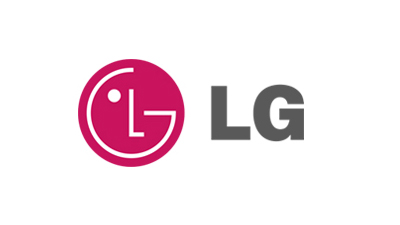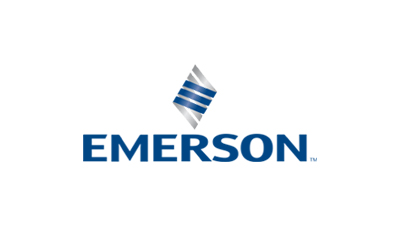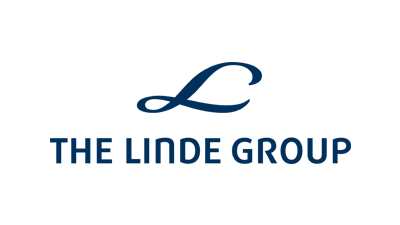
-
Report ID 141279 -
Published Date April 2025 -
Delivery Format PDF/PPT/Word -
Editor's Rating
-
Report Details
Report Overview
The Global Machine Vision Market size is expected to be worth around USD 73.4 Billion By 2034, from USD 19.46 Billion in 2024, growing at a CAGR of 14.20% during the forecast period from 2025 to 2034. In 2024, the Asia-Pacific region dominated the machine vision market, capturing more than 44.7% of the global market, with revenues reaching USD 8.6 billion.
Machine vision analysis is used in industries for tasks like automatic inspection, process control, and robot guidance. It captures and analyzes images, utilizing core components such as cameras, image sensors, and software algorithms. These systems process visual data, which can then trigger actions, make decisions, or provide valuable information for various industrial applications.
Key factors driving the machine vision market include the growing demand for quality inspection and automation across industries like manufacturing, automotive, pharmaceuticals, and food and beverage. Additionally, advancements in AI and machine learning are improving the efficiency and reliability of machine vision systems.
The integration of IoT devices with machine vision systems has led to smarter, more interconnected production processes. The shift towards Industry 4.0, focusing on digitalization and data exchange, further drives machine vision adoption. Additionally, reduced hardware costs and more accessible software are lowering barriers, enabling broader industry use.

The demand for machine vision systems is growing rapidly due to their ability to minimize errors and boost production efficiency. Industries use these systems to meet strict quality standards, maintain consistency, and enhance product throughput. Additionally, integrating machine vision with Internet of Things (IoT) devices is driving further demand, enabling businesses to leverage real-time data for more informed decision-making.
Implementing machine vision technology offers substantial business benefits. Machine vision enhances operational efficiency by speeding up production, reducing downtime, and minimizing waste by detecting defects early. The return on investment is substantial, as cost savings from better product quality and less manual labor outweigh initial setup costs.
Market opportunities in machine vision lie in advanced image processing algorithms and AI integration, expanding applications into fields like traffic management, security, and healthcare. Additionally, the miniaturization of components and increased computational power are enabling more compact and less intrusive machine vision systems.
Recent innovations in machine vision include the use of deep learning technologies that enable systems to make more accurate decisions based on complex image data. Machine vision is advancing with multispectral and hyperspectral imaging to detect defects invisible to the human eye. The integration of 3D imaging technologies also allows for more detailed analysis and precise measurements.
The primary reasons for adopting machine vision systems include the need for enhanced quality control, increased automation, and the drive towards digital transformation. Machine vision systems offer fast, reliable inspection beyond human capabilities, making them essential in industries like pharmaceuticals and automotive manufacturing. Their scalability and adaptability make them a smart investment for businesses aiming to future-proof operations.
Key Takeaways
- The Global Machine Vision Market size is projected to reach USD 73.4 Billion by 2034, growing from USD 19.46 Billion in 2024, reflecting a CAGR of 14.20% during the forecast period from 2025 to 2034.
- In 2024, the Hardware segment held a dominant position in the Machine Vision Market, capturing more than 62.7% of the market share.
- In 2024, the PC-Based segment led the market, accounting for more than 52.3% of the share.
- In 2024, the Quality Assurance and Inspection segment held a dominant market share, capturing more than 46.2% of the global machine vision market.
- In 2024, the Automotive segment was the largest contributor within the Machine Vision industry, holding more than 51.7% of the market share.
- In 2024, the Asia-Pacific region dominated the machine vision market, capturing more than 44.7% of the global market, with revenues reaching USD 8.6 billion.
- The machine vision market in China was valued at USD 3.91 billion in 2024, with an anticipated CAGR of 15.3%.
China Machine Vision Market
The market for machine vision in China was estimated to be valued at USD 3.91 billion in the year 2024. It is anticipated to grow at a compound annual growth rate (CAGR) of 15.3%.
This robust growth is driven by advancements in manufacturing and the rising adoption of automation across industries. As a global manufacturing hub, China is rapidly adopting machine vision technologies for quality control, inspection, and automation boosting efficiency, reducing errors, and cutting production costs in a competitive market.
Furthermore, the growth of machine vision in China is fueled by its increasing use in emerging sectors like automotive, electronics, and pharmaceuticals. In the automotive industry, it’s key for assembly verification, paint inspection, and component checks. In electronics, it ensures precise component placement and circuit board inspection.
The market is projected to maintain strong growth, driven by ongoing technological advancements like AI integration with machine vision systems. This progress will expand application areas and enhance system capabilities. Additionally, government support and investments in smart manufacturing and Industry 4.0 will further boost market growth in the coming years.

In 2024, Asia-Pacific held a dominant market position in the machine vision market, capturing more than a 44.7% share, with revenues amounting to USD 8.6 billion. This region’s leadership in the market can be attributed to several key factors that uniquely position it at the forefront of technological advancements and industrial growth.
The Asia-Pacific region significantly contributes to the global machine vision market due to its strong manufacturing base in countries like China, Japan, and South Korea. These nations invest heavily in automation, supported by government initiatives such as China’s Made in 2025 and Japan’s Society 5.0. The presence of leading electronics manufacturers also drives demand for machine vision systems, enhancing efficiency and product quality.
Rising demand for high-quality consumer products in Asia-Pacific is driving the adoption of advanced manufacturing and machine vision systems. Key industries like automotive, electronics, and pharmaceuticals are using these technologies to meet strict quality standards. This trend is further fueled by a growing middle class seeking tech-enhanced products, prompting manufacturers to embrace more sophisticated production methods.
The Asia-Pacific machine vision market is set to grow steadily, driven by ongoing industrialization, technological innovation, and rising R&D investments. Regional companies are expanding and developing advanced solutions, keeping Asia-Pacific at the forefront of the global market, while other regions aim to replicate its success.

Component Analysis
In 2024, the Hardware segment held a dominant market position in the Machine Vision Market, capturing more than a 62.7% share. This substantial market share can be attributed to the essential role that hardware components such as cameras, frame grabbers, processors, optics/lenses, and LED lighting play in machine vision systems.
Cameras and processors are crucial to the growth of the machine vision market. Cameras capture detailed images for inspection and control, with advancements in resolution, frame rates, and light sensitivity boosting system performance. Meanwhile, more powerful processors enable faster data processing and real-time decision-making, essential for high-speed manufacturing.
Innovations in optics and lighting have strengthened the hardware segment’s dominance. High-quality lenses improve image capture across distances and conditions, expanding machine vision applications. Meanwhile, LED lighting advancements enhance image quality and consistency, crucial for tasks like assembly verification, defect detection, and barcode reading.
The integration of machine vision hardware with IoT and AI technologies offers significant growth potential. As industries adopt smarter systems, upgrading hardware to integrate AI for better decision-making and predictive analytics becomes a competitive edge. This trend is set to keep the hardware segment dominant, driven by ongoing advancements and the growing complexity of industrial automation.
Product Analysis
In 2024, the PC Based segment of the Machine Vision market held a dominant position, capturing more than a 52.3% share. The leadership of this segment is driven by key factors, particularly the integration of PC-based systems in machine vision. These systems offer enhanced processing power, flexibility, and scalability, making them ideal for managing complex visual data across various industries.
PC-based machine vision systems dominate due to their high processing power, enabling them to handle complex algorithms for detailed image analysis. Their ability to integrate multiple cameras and process large data streams in real time makes them ideal for applications like detailed inspection and quality control in industries such as electronics manufacturing, automotive, and pharmaceuticals.
Scalability and Customization PC Based systems offer significant advantages in terms of scalability and customization. Manufacturers can easily upgrade the hardware components such as CPUs, GPUs, and additional storage to enhance their machine vision capabilities as technology advances or as project demands change.
The dominance of PC-based machine vision systems is also driven by extensive software support. These systems are compatible with a wide range of proprietary and open-source vision software, offering tools for developing advanced algorithms. This compatibility ensures easy integration with existing IT infrastructure, making PC-based systems highly appealing.
Application Analysis
In 2024, the Quality Assurance and Inspection segment held a dominant market position, capturing more than a 46.2% share of the global machine vision market. This significant market share is driven by the critical need for ensuring product quality and reliability across diverse manufacturing sectors.
Quality assurance and inspection systems use advanced imaging technologies to detect defects, ensure assembly accuracy, and verify product specifications with precision, crucial for meeting standards and regulatory compliance. The growing demand for high-quality consumer products also motivates manufacturers to invest in these systems to stay competitive and protect their brand reputation.
The dominance of the Quality Assurance and Inspection segment is driven by rising automation in manufacturing. As industries aim for greater efficiency and lower production costs, automated quality assurance systems are essential. They reduce human error, enhance throughput, and ensure consistent, rapid product inspection during production.
Technological advancements, including high-resolution cameras, advanced image processing algorithms, and machine learning for defect recognition, are boosting machine vision systems’ capabilities in quality assurance. These innovations allow for detecting minute, complex defects that are difficult for human inspectors, ensuring higher product quality and compliance with industry standards.

Industry Vertical Analysis
In 2024, the Automotive segment held a dominant market position within the Machine Vision industry, capturing more than a 51.7% share. This significant market share is attributed to several core factors that underscore the integration of machine vision technologies in automotive manufacturing and quality control processes.
The leading position of the Automotive segment can largely be attributed to the advanced integration of machine vision systems in automotive production lines. These systems are crucial for automated quality control, ensuring precision in assembly operations, and verification processes that are vital for safety and compliance standards.
The push towards automation in the automotive industry has significantly driven the adoption of machine vision systems. As manufacturers aim to increase efficiency and reduce production costs, machine vision systems have become indispensable for tasks such as robotic guidance, parts inspection, and assembly verification. The ability to quickly and accurately detect defects or assembly mismatches makes machine vision systems a key component of modern automated factories.
Stringent regulatory and safety requirements in the automotive sector drive the need for reliable inspection systems. Machine vision systems ensure compliance by enabling thorough inspections, ensuring that every component meets quality specifications. This makes them essential in vehicle production, particularly for adhering to international safety and environmental regulations.
Continuous advancements in machine vision technology, such as improved camera systems, lighting, and image processing algorithms, have reinforced the dominance of the automotive segment. Innovations like 3D imaging and AI-driven analysis enhance the flexibility and effectiveness of machine vision systems, allowing them to adapt to diverse manufacturing environments and tasks.
Key Market Segments
By Component
- Hardware
- Camera
- Frame Grabber
- Optics/Lenses
- LED Lighting
- Processor
- Others
- Software
- Barcode Reading
- Standard Algorithm
- Deep Learning Software
- Others
- Services
- Integration
- Solution Management
By Product
- PC Based
- Smart Camera Based
By Application
- Quality Assurance and Inspection
- Positioning and Guidance
- Measurement
- Identification
- Predictive Maintenance
By Industry Vertical
- Automotive
- Pharmaceuticals & Chemicals
- Electronics & Semiconductor
- Pulp & Paper
- Printing & Labeling
- Food & Beverage (Packaging and Bottling)
- Glass & Metal
- Postal & Logistics
- Others
Key Regions and Countries
- North America
- US
- Canada
- Europe
- Germany
- France
- The UK
- Spain
- Italy
- Rest of Europe
- Asia Pacific
- China
- Japan
- South Korea
- India
- Australia
- Singapore
- Rest of Asia Pacific
- Latin America
- Brazil
- Mexico
- Rest of Latin America
- Middle East & Africa
- South Africa
- Saudi Arabia
- UAE
- Rest of MEA
Driver
Increasing Demand for Automation in Manufacturing
The global manufacturing sector is experiencing a significant shift towards automation, driven by the need for enhanced efficiency, precision, and productivity. Machine vision systems are at the forefront of this transformation, enabling automated inspection, quality control, and guidance of robotic systems.
These systems utilize cameras and image processing software to perform tasks that traditionally required human intervention, such as detecting defects, measuring components, and identifying products. By integrating machine vision, manufacturers can achieve higher throughput, reduce errors, and lower operational costs.
This trend is particularly evident in industries like automotive, electronics, and pharmaceuticals, where precision and consistency are paramount. The adoption of machine vision technology is thus a critical driver propelling the growth of the market.
Restraint
High Initial Investment Costs
Despite the advantages, the widespread adoption of machine vision systems is hindered by substantial initial investment requirements. Implementing these systems involves costs related to purchasing high-quality cameras, advanced image processing software, and integrating them into existing production lines.
Additionally, expenses are incurred in training personnel to operate and maintain the systems effectively. For small and medium-sized enterprises (SMEs), these financial barriers can be particularly challenging, making it difficult to justify the return on investment. Consequently, the high upfront costs serve as a significant restraint, limiting the market’s expansion, especially among cost-sensitive organizations.
Opportunity
Integration of Artificial Intelligence in Machine Vision
The convergence of artificial intelligence (AI) with machine vision technology presents a substantial opportunity for market growth. AI algorithms, particularly those involving deep learning, enhance the capability of machine vision systems to interpret complex visual data, leading to improved accuracy in defect detection, pattern recognition, and decision-making processes.
This integration allows for more adaptive and intelligent systems capable of handling a diverse range of tasks across various industries. Furthermore, AI-powered machine vision facilitates real-time analytics and predictive maintenance, contributing to increased operational efficiency. As industries continue to embrace Industry 4.0 and smart manufacturing practices, the demand for AI-integrated machine vision systems is expected to rise, offering lucrative opportunities for market players.
Challenge
Shortage of Skilled Professionals
A significant challenge facing the machine vision market is the shortage of skilled professionals capable of developing, implementing, and maintaining these advanced systems. The complexity of machine vision technology requires expertise in areas such as optics, image processing, software development, and system integration.
However, there is a gap between the rapid advancement of the technology and the availability of trained personnel. This skills shortage can lead to longer implementation times, increased operational costs, and suboptimal system performance. Addressing this challenge necessitates focused efforts on education and training programs to cultivate a workforce proficient in machine vision technologies.
Emerging Trends
Machine vision is rapidly evolving, reshaping industries with advanced technologies that enhance automation and precision. A significant trend is the integration of artificial intelligence (AI), particularly deep learning models like Vision Transformers (ViTs). These models improve the system’s ability to interpret complex visual data, enabling more accurate object detection and classification .
Edge computing is transforming tech by processing data locally, cutting latency and enabling real-time decisions vital for autonomous vehicles and industrial automation. Event-based cameras mark a leap in sensor tech by capturing scene changes instead of static images, delivering fast, high-dynamic-range data perfect for rapid environments.
Additionally, high-speed interfaces like CoaXPress and Ethernet enable rapid transmission of large data volumes, supporting real-time, high-resolution imaging. Together, these trends enhance machine vision systems, making them more efficient, accurate, and versatile across a wide range of industries.
Business Benefits
Machine vision systems can inspect products rapidly and continuously without human supervision. This constant operation reduces the time needed for quality checks, allowing for faster production cycles. By automating inspection tasks, businesses can increase output while maintaining consistent quality standards.
By taking over hazardous inspection tasks, machine vision reduces the risk of workplace accidents. These systems improve safety by operating in hazardous environments, reducing human exposure to extreme temperatures or harmful substances through machine vision.
Integrating machine vision with remote monitoring technologies allows businesses to oversee production processes from any location. This capability facilitates timely identification and resolution of issues, reducing downtime. Remote monitoring also provides flexibility in managing operations, which can be particularly beneficial for businesses with multiple production sites.
Key Player Analysis
The market is shaped by key players who provide innovative solutions in cameras, sensors, and software to enhance various industrial applications.
- Allied Vision Technologies GmbH is a well-known name in the machine vision market, specializing in high-performance cameras and image processing solutions. Allied Vision provides high-quality, reliable cameras designed for demanding environments, offering both standard and customized solutions for industries like medical imaging, logistics, and automation.
- Keyence Corporation, a global leader in automation and machine vision, is renowned for its advanced sensor technology and vision systems. The company’s product line includes high-resolution cameras, sophisticated sensors, and powerful software designed to streamline industrial automation. Keyence is unique for its ability to provide an integrated approach to machine vision, enabling seamless interaction between hardware and software.
- LMI Technologies, Inc. is another prominent player in the machine vision market, offering 3D vision systems and sensors. The company has built a strong reputation for providing high-precision 3D scanning solutions that are crucial for applications requiring detailed measurement and inspection. LMI’s advanced technologies are widely used in industries like automotive, robotics, and packaging.
Top Key Players in the Market
- Allied Vision Technologies GmbH
- Keyence Corporation
- LMI Technologies, Inc.
- Basler AG
- Cognex Corporation
- Sick AG
- Tordivel AS
- Stemmer Imaging
- National Instruments Corporation
- OMRON Corporation
- Other Major Players
Top Opportunities Awaiting for Players
The Machine Vision market presents several significant opportunities that could be beneficial for market players and industries looking to capitalize on this technology.
- Integration with Artificial Intelligence (AI): The convergence of AI with machine vision technologies is a critical driver for market growth. AI enhances machine vision capabilities, improving accuracy, efficiency, and versatility in applications such as quality control, automated inspection, and robotic guidance.
- Expansion in E-Commerce: The surge in e-commerce has created a demand for robust machine vision systems to automate and optimize warehousing, logistics, and online retail operations. Machine vision systems help in sorting, packaging, and quality assurance processes, contributing significantly to operational efficiency.
- Advancements in 3D Vision Technologies: The development and integration of 3D vision technologies are opening new applications in industrial automation, from improving the quality control processes to enhancing the capabilities of robotic systems. This technology is particularly transformative in manufacturing environments where precision is critical.
- Healthcare and Pharmaceuticals: In the pharmaceuticals and healthcare industries, machine vision is increasingly employed for detailed inspections, ensuring compliance with stringent regulatory standards. This includes applications in packaging safety, label accuracy, and detailed assembly checks, which are vital for patient safety.
- Smart Manufacturing and Industry 4.0: As manufacturing sectors globally move towards Industry 4.0, machine vision is becoming an integral part of smart factories. It supports a variety of applications including predictive maintenance, quality assurance, and process optimization, making the manufacturing process more efficient and less prone to errors.
Recent Developments
- In April 2024, Cognex Corporation has introduced the In-Sight L38 3D Vision System, the first AI-powered 3D solution for fast, reliable manufacturing inspections. By merging AI with 2D and 3D vision, it creates unique projections that simplify training and expose features invisible to traditional 2D imaging.
Report Scope
Report Features Description Market Value (2024) USD 19.46 Bn Forecast Revenue (2034) USD 73.4 Bn CAGR (2025-2034) 14.2% Base Year for Estimation 2024 Historic Period 2020-2023 Forecast Period 2025-2034 Report Coverage Revenue forecast, AI impact on market trends, Share Insights, Company ranking, competitive landscape, Recent Developments, Market Dynamics and Emerging Trends Segments Covered By Component (Hardware (Camera, Frame Grabber, Optics/Lenses, LED Lighting, Processor, Others), Software (Barcode Reading, Standard Algorithm, Deep Learning Software, Others), Services (Integration, Solution Management), By Product (PC Based, Smart Camera Based), By Application (Quality Assurance and Inspection, Positioning and Guidance, Measurement, Identification, Predictive Maintenance), By Industry Vertical (Automotive, Pharmaceuticals & Chemicals, Electronics & Semiconductor, Pulp & Paper, Printing & Labeling, Food & Beverage (Packaging and Bottling), Glass & Metal, Postal & Logistics, Others) Regional Analysis North America – US, Canada; Europe – Germany, France, The UK, Spain, Italy, Russia, Netherlands, Rest of Europe; Asia Pacific – China, Japan, South Korea, India, New Zealand, Singapore, Thailand, Vietnam, Rest of APAC; Latin America – Brazil, Mexico, Rest of Latin America; Middle East & Africa – South Africa, Saudi Arabia, UAE, Rest of MEA Competitive Landscape Allied Vision Technologies GmbH, Keyence Corporation, LMI Technologies, Inc., Basler AG, Cognex Corporation, Sick AG, Tordivel AS, Stemmer Imaging, National Instruments Corporation, OMRON Corporation, Other Major Players Customization Scope Customization for segments, region/country-level will be provided. Moreover, additional customization can be done based on the requirements. Purchase Options We have three license to opt for: Single User License, Multi-User License (Up to 5 Users), Corporate Use License (Unlimited User and Printable PDF) -
Table Of Content
Research Insights & Deliverables
 Development and Future Forecast
Development and Future Forecast Competitive benchmarking
Competitive benchmarking Company Revenue Statistics
Company Revenue Statistics Rising Regional Opportunities
Rising Regional Opportunities Technology Trends and Dynamics
Technology Trends and Dynamics Technology Assessment
Technology Assessment
-
Inquiry Before Buying
Research Insights & Deliverables
 Development and Future Forecast
Development and Future Forecast Competitive benchmarking
Competitive benchmarking Company Revenue Statistics
Company Revenue Statistics Rising Regional Opportunities
Rising Regional Opportunities Technology Trends and Dynamics
Technology Trends and Dynamics Technology Assessment
Technology Assessment
-
Request Sample
Research Insights & Deliverables
 Development and Future Forecast
Development and Future Forecast Competitive benchmarking
Competitive benchmarking Company Revenue Statistics
Company Revenue Statistics Rising Regional Opportunities
Rising Regional Opportunities Technology Trends and Dynamics
Technology Trends and Dynamics Technology Assessment
Technology Assessment














